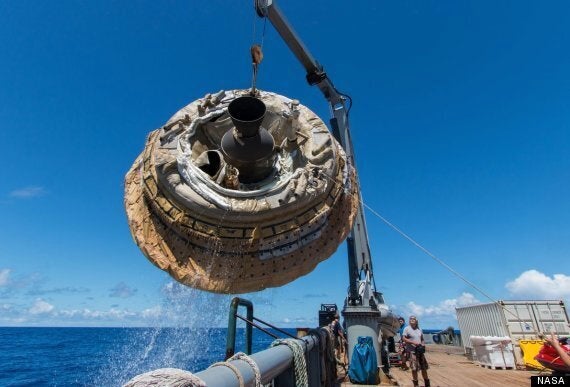Nasa has successfully tested its new Low Density Supersonic Decelerator vehicle, also known as the 'Flying Saucer'.
Seriously.
The vehicle is actually designed to help Nasa understand how to slow descending, massive vehicles sufficiently so as to land safely on Mars.
Many of the early ideas for manned missions to the Red Planet, or more ambitious robotic explorers, depend on finding new ways to float vehicles down through its atmosphere.

The vehicle has a huge 100-foot-wide parachute (the biggest in history) combined with two saucer devices (Supersonic Inflatable Aerodynamic Decelerators) which are built to fit around entry vehicles and slow them down by increasing drag.
In the test Nasa launched a 7,000lbs test vehicle on a balloon, and dropped it from 23 miles up where a booster launched it another 11 miles into the air.
In a perfect test the SIADs would inflate and slow the vehicle to mach 2.5, whereupon the chute would have descended it slowly into the Pacific Ocean. Alas the test was not quite perfect as the parachute did not deploy.
Still, officials said they were pleased and said that the tech would eventually be able to land objects 20-30 times as large as the Curiosity rover on Mars.
"We think that the parachute we're developing and testing is amenable to being used in clusters," Clark said. "Several parachutes at once create even more drag, and those kinds of things are the technologies that would enable the 20 to 30 tons that we're talking about."